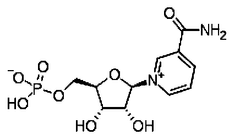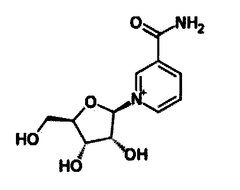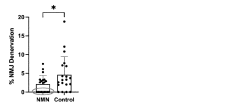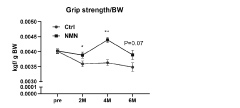NMN and Joint Health: Emerging Research
NMN and Joint Health: Background and Objectives
Nicotinamide mononucleotide (NMN) has emerged as a promising compound in the field of anti-aging research, with recent studies exploring its potential benefits for joint health. As a precursor to nicotinamide adenine dinucleotide (NAD+), NMN plays a crucial role in cellular energy metabolism and various physiological processes. The exploration of NMN's effects on joint health represents a significant advancement in our understanding of age-related joint disorders and potential interventions.
The primary objective of this research is to investigate the relationship between NMN supplementation and joint health, focusing on its potential to alleviate symptoms associated with osteoarthritis and other degenerative joint conditions. This area of study has gained traction due to the increasing prevalence of joint-related issues in aging populations worldwide, coupled with the limitations of current treatment options.
Historically, joint health research has centered on traditional approaches such as pain management, physical therapy, and surgical interventions. However, the discovery of NMN's role in cellular function has opened new avenues for exploring preventive and regenerative strategies. The intersection of NMN research and joint health studies represents a convergence of multiple scientific disciplines, including biochemistry, molecular biology, and rheumatology.
Recent technological advancements in genomics, proteomics, and metabolomics have significantly contributed to our ability to study the effects of NMN on joint tissues at a molecular level. These tools allow researchers to examine changes in gene expression, protein synthesis, and metabolic pathways associated with NMN supplementation in joint cells and tissues.
The evolving landscape of NMN research in the context of joint health is characterized by several key trends. These include investigations into NMN's potential to enhance cartilage regeneration, reduce inflammation in synovial tissues, and improve overall joint function. Additionally, researchers are exploring the optimal dosage, delivery methods, and long-term effects of NMN supplementation on joint health.
As this field progresses, it is anticipated that the findings will not only contribute to our understanding of joint aging and degeneration but also pave the way for novel therapeutic approaches. The potential implications of this research extend beyond academic interest, with significant relevance for the pharmaceutical industry, healthcare providers, and individuals seeking to maintain joint health and mobility as they age.
Market Analysis for NMN Joint Health Products
The market for NMN (Nicotinamide Mononucleotide) joint health products is experiencing significant growth and attracting increasing attention from both consumers and industry players. This emerging market segment is driven by the growing awareness of the potential benefits of NMN in supporting joint health and overall well-being, particularly among aging populations.
The global joint health supplements market, which includes NMN products, is projected to expand at a compound annual growth rate (CAGR) of over 7% from 2021 to 2026. This growth is fueled by factors such as the rising prevalence of joint-related disorders, increasing health consciousness among consumers, and a growing elderly population worldwide.
NMN joint health products are positioned at the intersection of two rapidly growing markets: anti-aging supplements and joint health supplements. This unique positioning allows these products to tap into multiple consumer segments, including health-conscious individuals, athletes, and older adults seeking to maintain their mobility and quality of life.
Consumer demand for NMN joint health products is driven by several factors. Firstly, there is a growing body of research suggesting that NMN may help support joint health by promoting cellular energy production and reducing inflammation. Secondly, consumers are increasingly seeking natural and preventive approaches to joint health, moving away from traditional pain relief medications.
The target demographic for NMN joint health products is primarily adults aged 40 and above, with a particular focus on those in their 50s and 60s. This age group is more likely to experience joint discomfort and is often more proactive about their health. Additionally, there is a growing interest among younger adults, particularly those involved in high-impact sports or fitness activities.
In terms of regional markets, North America currently leads the demand for NMN joint health products, followed by Europe and Asia-Pacific. The United States, in particular, represents a significant market opportunity due to its large aging population and high consumer awareness of dietary supplements.
The competitive landscape for NMN joint health products is becoming increasingly crowded, with both established supplement companies and new entrants vying for market share. Key players are differentiating themselves through product formulations, clinical studies, and marketing strategies. Some companies are focusing on combining NMN with other joint health ingredients like glucosamine and chondroitin to create comprehensive joint support formulas.
Despite the promising outlook, the market for NMN joint health products faces several challenges. These include regulatory hurdles in some regions, the need for more extensive clinical research to support health claims, and consumer education about the benefits of NMN for joint health. Additionally, pricing remains a significant factor, as NMN supplements are generally more expensive than traditional joint health products.
Current State and Challenges in NMN Joint Health Research
The current state of research on NMN (Nicotinamide Mononucleotide) and joint health is characterized by promising preliminary findings, but also faces significant challenges. Recent studies have shown that NMN supplementation may have potential benefits for joint health, particularly in the context of age-related joint deterioration and osteoarthritis. Animal studies have demonstrated that NMN can improve cartilage maintenance and reduce inflammation in joint tissues.
However, the field is still in its early stages, with limited human clinical trials specifically focused on NMN's effects on joint health. Most of the existing research has been conducted in vitro or using animal models, which, while valuable, may not directly translate to human outcomes. This gap in human-based evidence presents a significant challenge for researchers and clinicians seeking to establish NMN as a viable intervention for joint health issues.
One of the primary technical challenges in this field is the development of effective delivery methods for NMN to joint tissues. The compound's bioavailability and its ability to reach target areas within joints remain subjects of ongoing investigation. Researchers are exploring various formulations and delivery systems to enhance NMN's efficacy in joint health applications.
Another critical challenge is the need for long-term safety and efficacy studies. While short-term supplementation with NMN appears to be well-tolerated, the effects of prolonged use, especially in the context of joint health, are not yet fully understood. This gap in knowledge is particularly important given that joint health issues often require long-term management.
The complexity of joint physiology and the multifactorial nature of joint diseases also pose significant challenges. NMN's potential effects on joint health likely involve multiple pathways and mechanisms, including NAD+ biosynthesis, inflammation modulation, and cellular energy metabolism. Unraveling these complex interactions and their specific impacts on joint health requires sophisticated research methodologies and interdisciplinary collaboration.
Furthermore, the field faces challenges in standardizing NMN production and quality control. As interest in NMN grows, ensuring consistent purity and potency across different sources and formulations is crucial for reliable research outcomes and potential therapeutic applications.
Geographically, research in this area is distributed across several countries, with notable contributions from the United States, Japan, and China. However, there is a need for more widespread and coordinated international efforts to accelerate progress in understanding NMN's role in joint health.
In conclusion, while the current state of NMN research in joint health shows promise, it is characterized by a mix of exciting potential and significant challenges. Overcoming these hurdles will require continued investment in research, particularly in human clinical trials, and advancements in NMN delivery and formulation technologies.
Existing NMN Applications for Joint Health
01 NMN supplementation for joint health improvement
Nicotinamide Mononucleotide (NMN) supplementation has shown potential benefits for joint health. It may help reduce inflammation, improve cartilage regeneration, and enhance overall joint function. NMN's ability to boost NAD+ levels in the body could contribute to better cellular energy production and repair mechanisms in joint tissues.- NMN supplementation for joint health improvement: Nicotinamide Mononucleotide (NMN) supplementation has shown potential benefits for joint health. It may help reduce inflammation, improve cartilage regeneration, and enhance overall joint function. NMN's ability to boost NAD+ levels in the body could contribute to better cellular energy production and repair mechanisms in joint tissues.
- Combination of NMN with other joint health ingredients: Formulations combining NMN with other joint health-promoting ingredients have been developed. These may include glucosamine, chondroitin, collagen, or specific herbal extracts. The synergistic effects of these combinations could potentially enhance the overall efficacy for joint health support and maintenance.
- NMN delivery methods for joint health applications: Various delivery methods for NMN have been explored to optimize its effectiveness for joint health. These may include oral supplements, topical applications, or novel drug delivery systems designed to target joint tissues specifically. The choice of delivery method can impact the bioavailability and efficacy of NMN for joint health purposes.
- NMN's role in age-related joint conditions: Research has investigated the potential of NMN in addressing age-related joint conditions such as osteoarthritis. The compound's ability to support cellular energy production and potentially slow down the aging process in joint tissues may offer benefits for maintaining joint health in older populations.
- Mechanisms of NMN action on joint tissues: Studies have explored the specific mechanisms by which NMN affects joint tissues. These may include modulation of inflammatory pathways, enhancement of mitochondrial function in chondrocytes, or stimulation of proteoglycan synthesis in cartilage. Understanding these mechanisms can lead to more targeted and effective NMN-based interventions for joint health.
02 Combination of NMN with other joint health ingredients
Formulations combining NMN with other joint health-promoting ingredients have been developed. These may include glucosamine, chondroitin, collagen, or specific herbal extracts. The synergistic effects of these combinations could potentially enhance the overall efficacy in supporting joint health and reducing discomfort.Expand Specific Solutions03 NMN delivery methods for joint health applications
Various delivery methods for NMN have been explored to optimize its effectiveness in joint health applications. These may include oral supplements, topical formulations, or novel delivery systems designed to enhance absorption and targeting to joint tissues. The choice of delivery method can impact the bioavailability and efficacy of NMN for joint health.Expand Specific Solutions04 NMN's role in age-related joint conditions
Research has investigated the potential of NMN in addressing age-related joint conditions such as osteoarthritis. NMN's ability to support cellular energy production and potentially slow down the aging process in joint tissues may offer benefits in managing and preventing age-related joint deterioration.Expand Specific Solutions05 Mechanisms of NMN action in joint tissues
Studies have explored the specific mechanisms by which NMN may benefit joint health. These include its role in reducing oxidative stress, modulating inflammatory responses, supporting mitochondrial function in joint cells, and potentially influencing gene expression related to joint tissue maintenance and repair.Expand Specific Solutions
Key Players in NMN and Joint Health Industries
The research on NMN and joint health is in its early stages, indicating an emerging market with significant growth potential. The competitive landscape is characterized by a mix of established pharmaceutical companies, research institutions, and innovative biotech startups. Key players like Bayer HealthCare and AbbVie are leveraging their extensive R&D capabilities, while institutions such as Washington University in St. Louis and Kyoto University are contributing to foundational research. The technology's maturity is still developing, with companies like Nuvamid SA and REST THERAPEUTICS focusing on translating research into practical applications. As the market expands, collaborations between academia and industry, exemplified by partnerships involving entities like The Scripps Research Institute, are likely to accelerate innovation and commercialization in this promising field of joint health research.
AbbVie, Inc.
Astellas Pharma, Inc.
Critical Studies on NMN's Effects on Joint Health
- Compositions and methods utilizing nicotinamide mononucleotide (NMN) and nicotinamide riboside (NR) to enhance Hsd3b6 enzyme activity, which promotes testosterone production and improves meibomian gland function by increasing acinar cells and lipid secretion, thereby addressing meibomian gland dysfunction and related disorders.
- A composition containing nicotinamide mononucleotide (NMN) is developed to enhance the innervation rate of the neuromuscular junction, thereby improving agility and motor function.
Regulatory Framework for NMN Supplements
The regulatory framework for NMN (Nicotinamide Mononucleotide) supplements is complex and evolving, reflecting the growing interest in this compound for potential health benefits, including joint health. In the United States, the Food and Drug Administration (FDA) plays a crucial role in overseeing dietary supplements, including those containing NMN.
Currently, the FDA does not classify NMN as a dietary ingredient, which has significant implications for its marketing and sale as a supplement. This classification is based on the FDA's interpretation of the Dietary Supplement Health and Education Act (DSHEA) of 1994. The agency has issued warning letters to companies marketing NMN as a dietary supplement, citing that it was first investigated as a new drug before being marketed as a dietary supplement.
This regulatory stance has created challenges for manufacturers and distributors of NMN supplements. Companies must navigate a complex landscape to ensure compliance with FDA regulations while still meeting consumer demand for these products. Some have opted to market NMN as a "research chemical" rather than a dietary supplement to avoid regulatory issues.
Internationally, the regulatory approach to NMN varies. In Japan, for instance, NMN has been approved as a food ingredient, allowing for its inclusion in various products. This divergence in regulatory approaches across different countries adds another layer of complexity for global companies operating in this space.
The scientific community continues to conduct research on NMN, particularly in areas such as joint health and anti-aging. As more studies emerge, there may be pressure on regulatory bodies to reassess their stance on NMN. However, any changes to the regulatory framework would likely require substantial evidence of safety and efficacy.
For consumers, the current regulatory environment means that caution is advised when purchasing and using NMN supplements. The lack of clear regulatory oversight can lead to variability in product quality and potency. Consumers are encouraged to seek products from reputable manufacturers and to consult healthcare professionals before use.
As research on NMN and joint health progresses, it is possible that the regulatory landscape will evolve. Stakeholders in the NMN industry are closely monitoring developments and advocating for clearer guidelines. The future regulatory framework for NMN supplements will likely be shaped by ongoing scientific research, consumer demand, and industry advocacy efforts.
Safety and Long-term Effects of NMN Supplementation
The safety and long-term effects of NMN supplementation are critical considerations in the emerging research on NMN and joint health. While initial studies have shown promising results, it is essential to thoroughly evaluate the potential risks and benefits associated with prolonged NMN use.
Short-term safety studies have generally reported minimal adverse effects from NMN supplementation. Common side effects include mild gastrointestinal discomfort, headaches, and fatigue, which typically subside as the body adjusts to the supplement. However, these studies have primarily been conducted on healthy adults, and more research is needed to assess the safety profile in diverse populations, including those with pre-existing health conditions.
Long-term effects of NMN supplementation remain largely unknown due to the limited duration of most clinical trials. As NMN influences fundamental cellular processes, including NAD+ metabolism and sirtuin activation, there is a theoretical potential for both beneficial and adverse long-term outcomes. Prolonged activation of these pathways could potentially impact cellular senescence, DNA repair mechanisms, and metabolic regulation.
One area of concern is the potential interaction between NMN supplementation and cancer risk. While some studies suggest that increased NAD+ levels may have anti-cancer properties, others raise the possibility that elevated NAD+ could support the growth of existing tumors. Long-term studies are crucial to clarify this relationship and establish safe dosing guidelines.
Cardiovascular effects of prolonged NMN use also warrant further investigation. Initial research indicates potential benefits for heart health, but the long-term impact on blood pressure, vascular function, and cardiac metabolism needs to be thoroughly evaluated. Additionally, the effects of NMN on liver and kidney function over extended periods require careful monitoring.
As research progresses, it is vital to establish standardized protocols for assessing the safety and efficacy of NMN supplementation. This includes developing biomarkers to track the long-term effects of NMN on cellular health, metabolism, and aging-related processes. Such markers could provide early indications of both beneficial and potentially harmful outcomes.
Regulatory considerations also play a crucial role in ensuring the safety of NMN supplementation. As NMN gains popularity, there is a need for clear guidelines on product quality, purity, and recommended dosages. Collaboration between researchers, regulatory bodies, and manufacturers is essential to establish these standards and ensure consumer safety.







